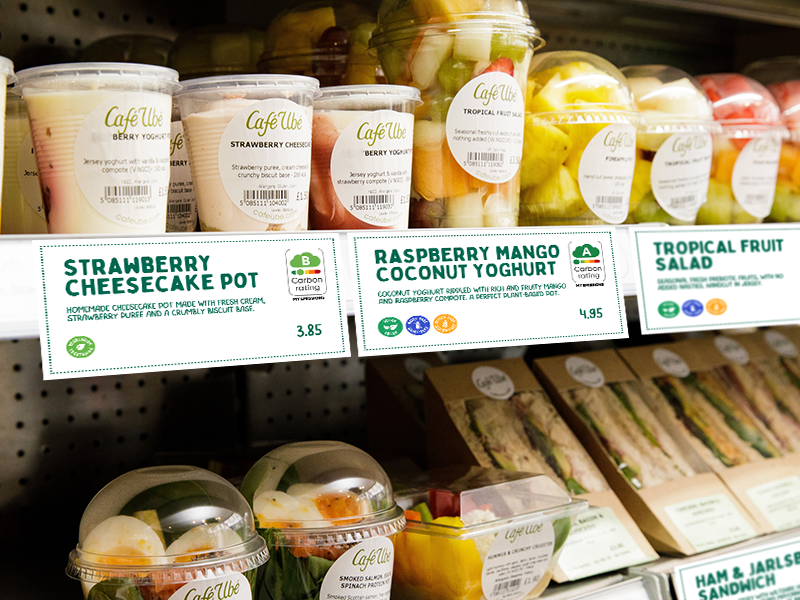Introducing Carbon Labelling
Making sustainable food choices easier
Looking after our island, environment, and planet is really important to us at Café Ubé. That’s why we’re delighted to be introducing carbon labelling across our product range: a simple way to help our customers to make informed, sustainable food choices.
What’s carbon labelling?
Every food choice we make impacts the environment. From farming and processing, to packaging and transport, the food we eat creates greenhouse gases, driving climate change. The total amount of these emissions is referred to as a food product’s carbon footprint.
A carbon label provides a clear, easy-to-understand measure of a dish or product’s carbon footprint. These are displayed using an A-E rating system:
- A : Very low carbon impact
- E: Very high carbon impact
You’ll see an A to E rating on the shelf labels for all of our café-made products. Most of our menu (more than 75%) is A or B-rated, but some products (particularly those that contain red meats, like beef) are more carbon intensive. We work to minimise the impact of these ingredients where we can, for example, using locally-sourced and responsibly-farmed beef.
How are we introducing carbon labelling?
We’ve collaborated with the Government of Jersey’s Plate to Planet project to use My Emissions carbon accounting software. This software assesses every stage of a food product’s journey to give an understanding of the carbon intensity involved in every dish’s farming, processing, packaging and transport. This is a world-first partnership of Government and local business joining forces to trial carbon labelling in the hospitality sector, and something we hope to expand further across the JPRestaurants group later this year.






